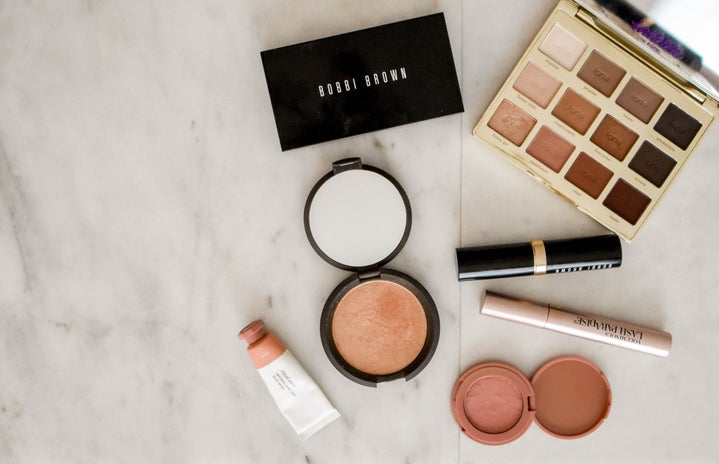It was a personal struggle with dermatitis and an unforgettable trip to Japan that transformed the way Victoria Tsai, the founder and CEO of Tatcha Beauty, viewed skincare. Today, her wildly successful line has a cult following, not just because of the incredible efficacy of her high quality products, but also because women everywhere are wanting to learn more about unique Eastern skincare rituals. We interviewed her to learn more about how she healed her own skin, what working with modern Japanese geisha is like, and her journey as an “momtrepreneur”.
HC: How did you first get involved in the skincare industry, and what inspired you to create Tatcha?
VT: During business school, I interned for one of the big beauty companies. I tested so many products on my skin that I gave myself acute dermatitis. My entire face was bleeding, blistering and scaling including my lips and eyelids. I was on steroids and antibiotics, but my skin would react to everything I came in contact with. My doctors said it would never return to normal. At the same time, I became disillusioned with my corporate work. I woke up one day and decided I wanted to find a simpler, more authentic approach to life.
I began to travel, eventually finding myself in Kyoto. When I found the gold-leaf beating papers that would become the first piece in our collection, I was inspired. The papers, a sheet of 100% abaca leaf that were originally used to protect gold leaf, are one of the original beauty products, used to lift away excess oil without disturbing makeup or stealing moisture from the skin. I fell in love with them because they embodied everything I was looking for: natural and simple with high-quality ingredients, and imbued with history, authenticity and artistry. I sold my engagement ring, our furniture, our house, and anything else of value we owned to bring them back to the U.S., and Tatcha was born.
The people I met in Japan taught me an entirely new way to think about beauty. Aging is not something to be reversed, but to be celebrated—beauty is gained over time, not lost. To care for the skin is to care for one’s health, because skin is our body’s largest organ and reflects our stress, our diet and our environment. Instead of constantly going to battle with their skin, they consider it with gratitude for all the incredible work it does for us.
When I traveled to Japan, I found myself healed in the truest sense of the word. The beautiful ingredients and timeless rituals I was introduced to calmed my skin; the kindness and mindfulness of the people nourished my soul. Creating Tatcha was my attempt to bring a small piece of Japan home with me — I often call it my love song to Kyoto.
HC: Can you introduce us to some of the products in your line? What are some of the Japanese ingredients that are included? and what would you recommend to our readers who are new to Tatcha?
VT: The core ingredients and rituals that comprise Japanese skincare have been perfected over centuries. In Japan, women understand that their skin is a reflection of their health and that the same ingredients that keep their bodies healthy also keeps their skin healthy. As a result, the core ingredients of Japanese skincare are the same as the core ingredients of their diet—rice, green tea and seaweed. It is worth noting that Japanese women have amongst the longest average lifespans in the developed world, which scientists often credit to their antioxidant-rich diet.
The steps of their skincare ritual are similarly elegant in their simplicity. While there are certainly modern day Japanese brands that offer 10 step skincare routines, the classical approach to skincare in Japan is based on daily purifying, polishing, plumping and nourishing the skin. The first step is usually a cleansing oil (purifying), followed by a very gentle exfoliation – historically with rice enzymes (polishing), then an essence (plumping) and finally sealing in all the goodness with a moisturizer or beauty oil (nourishing).
If you are new to Tatcha, I always recommend starting with this four-step ritual: the Pure One Step Camellia Cleansing Oil to melt away makeup, the Rice Polish to polish skin like a jewel, The Essence to plump and prep, and a moisturizer tailored to your skin type to nourish the skin.
HC: What is it like to create skincare with Japanese geisha? What products do you envision Tatcha will launch next?
VT: The ingredients and rituals that are working to bring back to life are inspired by a book written in 1813, so in some sense the collection has been under development for over 200 years. In creating a new process, we work with the Tatcha Institute in Japan to formulate each new item from scratch, like a couture dress. We use timeless ingredients, married with cutting-edge skincare science to extract and perfect the benefits of each.
The book covers seven chapters across three volumes, and skincare is only chapter one. We are excited to continue exploring its wisdom.
HC: What challenges have you faced and overcome as you grow your company?
VT: Each stage of growth of the company comes with unique challenges. In first creating Tatcha, it was raising money and finding great manufacturing and retail partners to work with. Once those were in place, we had to get the word out. Later on, the challenge is building and growing a great team, as quickly as the business can grow. Over time, it’s about keeping these things in balance, while remaining true to your values and mission.
HC: What advice do you have to younger college women who are also interested in starting their own businesses?
VT: If you want to start your own business regardless of your gender, I think it’s important to have an authentic point of view and commit to it. Starting a company or brand is really easy. Building something that reaches scale and comes to mean something to your clients is hard. That’s why almost all startups fail.
Being an entrepreneur can be a little more nuanced for women because it can coincide with the time in our lives where we want to become mothers too. I’m a big believer in momtrepreneurs. My daughter was born the day that we launched into retail and we’ve found a way to make it work. I think that motherhood has also made me a better leader. It taught me patience and empathy.
HC: How did your time at HBS shape you as a businesswoman and founder?
VT: My time at HBS taught me how to ask questions and develop a sense of pattern recognition. As an entrepreneur, you show up every day needing to figure out solutions to new challenges. It’s like being a forever student. It’s fun!
HC: What other Japanese beauty or wellness practices have influenced you? Which cities in Japan are a must visit?
VT: When I speak with women in Japan about their skincare practice, they always emphasize the importance of cleansing the skin. In the U.S., this is often a throwaway step: an inexpensive makeup remover or wipe, perhaps followed by an abrasive exfoliant a couple times a week for a “squeaky-clean” feeling. In Japan, melting away makeup and debris and polishing the skin like a jewel is at the heart of their daily ritual. You can apply the most expensive treatments or moisturizers, but their effect will be hampered if the skin is not returned to neutral at the end of every day.
Like Eastern medicine, they also take a preventative approach to skincare. Their formulas embody a gentle strength, efficacious without being too harsh on the skin. Instead of drying out acne or lasering away wrinkles, they work a little bit, every single day, for luminous skin.
Kyoto is my favorite place in Japan, and the home of the beauty practices that continue to inspire us today.
At HerCampus, we’ve been wanting to try Tatcha’s products after hearing rave reviews from our friends in the beauty industry – and of course, after reading that princess Meghan Markle is a fan! For my dry skin, Vicky recommended the Tatcha Starter Ritual Set: Ultra-Hydrating for Dry Skin. Tatcha has four Starter Sets, which each come with products tailored to your skin type (the other three sets are Soothing for Sensitive Skin, Nourishing for Normal to Dry Skin, Balancing for Normal to Oily Skin).
My set included the four products that Vicky mentioned form a great beginner’s multi-step skincare routine: the Pure One Step Camellia Cleansing Oil, the Rice Polish, The Essence, and finally the Ageless Enriching Renewal Cream. The first two steps are both cleansing steps to remove waterproof makeup and gently exfoliate the skin while also soothing the skin using Licorice Root extract. The Essence is a blend of anti-aging superfoods that work to plump and soften all skin types. Lastly, the Ageless Cream is perfect for those with dry skin like me. The Peony extract and Hyaluronic Acid help to deeply hydrate lackluster skin.
After sticking to this 4 step ritual each night for a week, I felt a distinctive difference in the vibrance and softness of my skin. The cleansing oil is the most effective cleanser I have used: it visibly removes all dirt and makeup with minimal product, and does not leave the “stripped” feeling that many harsher cleansers leave. The cold essence always felt relaxing to apply after cleansing, and finally the thick cream ensured that I did not wake up with flaky skin or an urge to itch my face. Perhaps the most unexpected effect was how the Tatcha set left my skin feeling much “brighter” than usual. Vicky was true to her word – I had no reactions whatsoever to the gentle formulations.
HC Readers – if you’re still looking for a Christmas or New Years gift, Tatcha’s Starter Sets make for the perfect surprise for any skincare lover!


